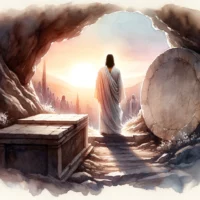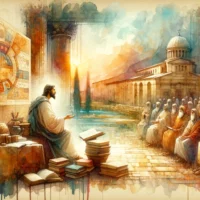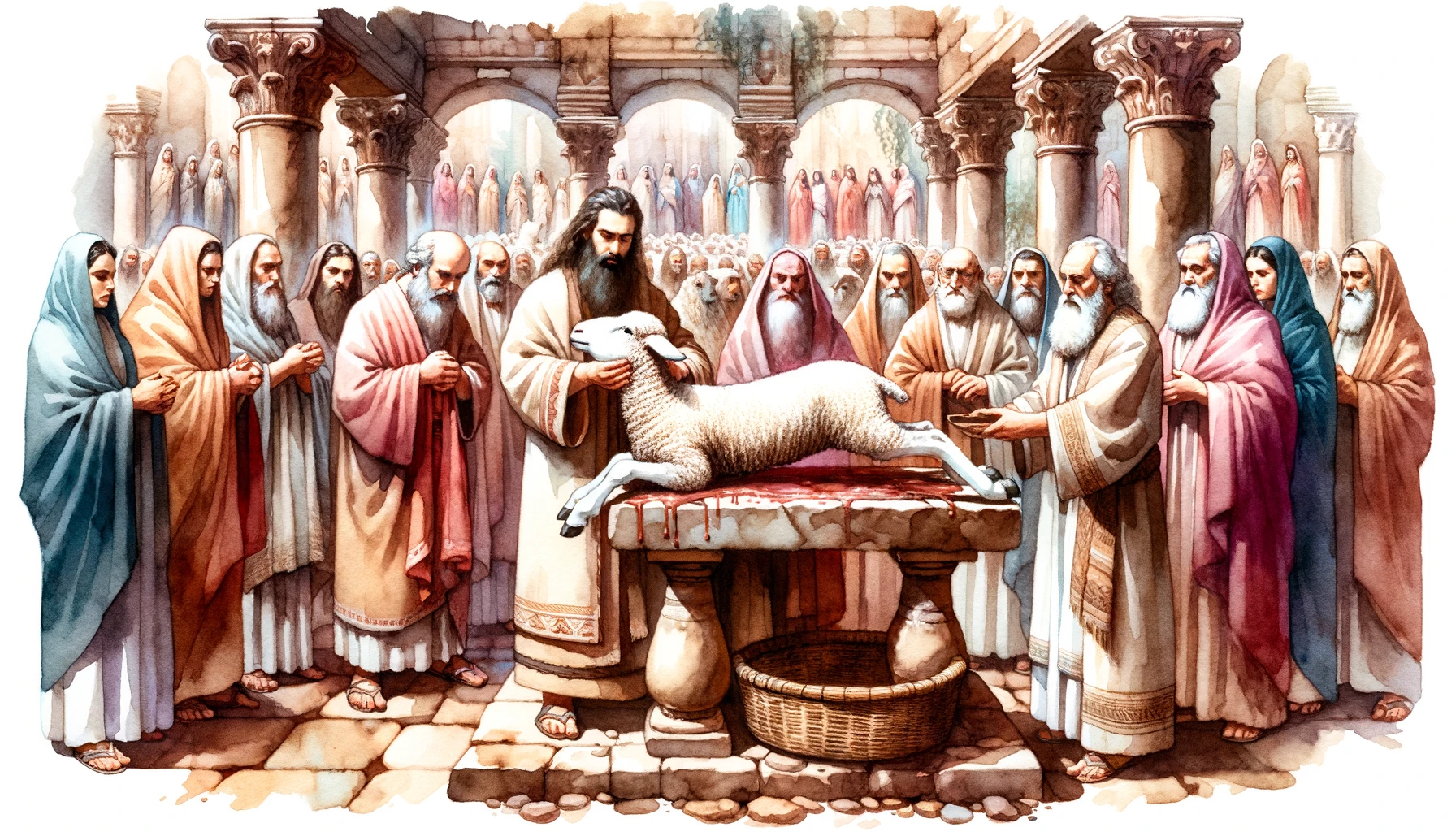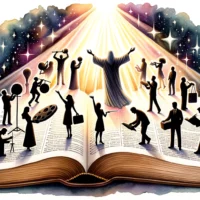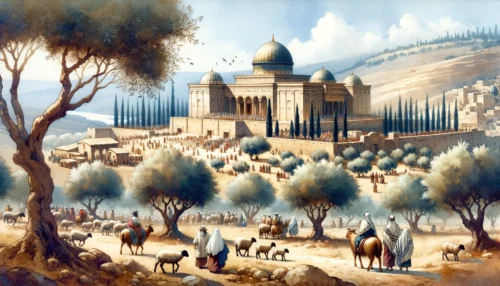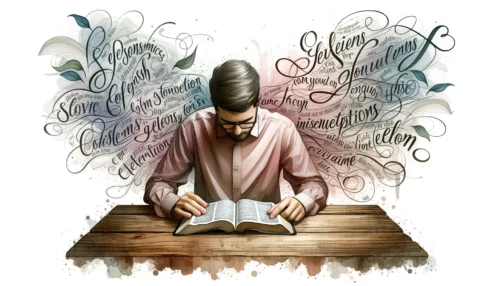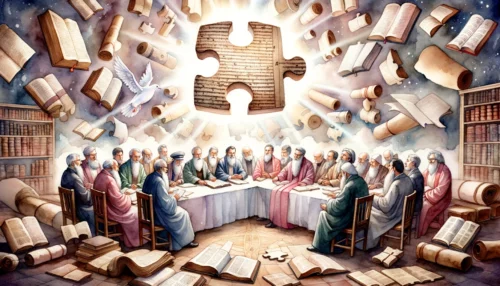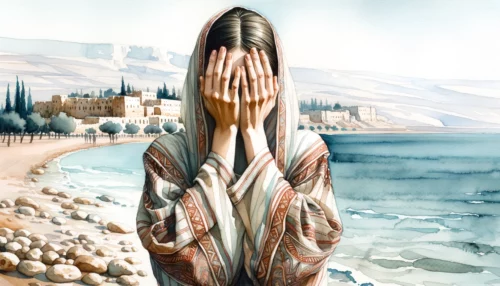The Old Testament is filled with instances of God’s people offering animal sacrifices to Him. This ancient practice, which may seem baffling and archaic to our modern sensibilities, held deep spiritual significance in the biblical narrative. Our journey through this topic will help us appreciate the cultural, historical, and theological context of these sacrifices, and how they pointed towards the ultimate sacrifice in the New Testament.
Understanding the Historical and Cultural Context
In the Old Testament, the animal sacrifices were deeply ingrained in the fabric of Israel’s religious and societal life. The practice has its roots in the earliest accounts of the Bible, starting with Abel, who offered a lamb from his flock to God (Genesis 4:4). This practice was then codified in the Mosaic Law given on Mount Sinai, where specific regulations were laid out concerning different types of sacrifices, the animals to be used, and the occasions when they were to be offered.
Sacrifices served multiple purposes in the ancient Israelite society. They were used to thank God, to seek His favor, and to ask for His forgiveness. The sacrifices were not just about the animals that were killed; the act of sacrifice itself was a physical manifestation of the worshiper’s inner spiritual condition. For instance, the burnt offering symbolized the complete surrender to God, while the sin offering represented the confession and repentance of sins.
The animals used in the sacrifices were not chosen randomly. They were specific types of animals — usually bulls, goats, or lambs. These animals had to be without blemish, symbolizing the idea of purity and perfection. The requirement for an animal without blemish underlined the seriousness of sin and the need for a perfect sacrifice to atone for it.
These sacrifices were not viewed as transactions. The Israelites did not believe they were buying forgiveness with their sacrifices. Instead, sacrifices were a way for the people to express their heartfelt repentance, their commitment to God, and their desire for reconciliation.
The location of the sacrifices also held significance. The tabernacle, and later the temple, were considered God’s dwelling places on earth. Offering sacrifices in these sacred locations signified the worshiper’s desire to approach God, to be in His presence.
This exploration of the historical and cultural context of animal sacrifices in the Old Testament helps us appreciate the symbolic depth and significance of this practice. It was not simply about the act of killing animals, but a holistic religious practice that touched every aspect of life in ancient Israel. The sacrifices provided a means for the Israelites to express their repentance, to demonstrate their commitment to God, and to seek His presence and favor. Understanding this context allows us to better appreciate the transition from Old Testament sacrifices to the ultimate sacrifice in the New Testament.
The Symbolic Significance of Animal Sacrifices
Beyond their historical and cultural context, animal sacrifices in the Old Testament bore profound symbolic significance. At the heart of this symbolism was the concept of atonement – the idea that sin creates a barrier between humans and God, and something must be done to remove this barrier and restore the relationship.
The act of offering an animal sacrifice symbolized the transfer of the worshiper’s sin onto the animal. The sin offering, for instance, involved the person laying their hands on the animal’s head, symbolizing the transfer of their guilt onto the animal (Leviticus 1:4). The animal was then killed, symbolizing the principle that the wages of sin is death (Romans 6:23). In this way, the animal served as a substitute, bearing the penalty that the sinner deserved.
The blood of the sacrificed animal also held significant symbolism. According to the Old Testament law, the life of a creature is in its blood (Leviticus 17:11). By shedding the animal’s blood, the Israelites were symbolically offering life itself to God. This blood was often sprinkled on the altar or even on the people, signifying the cleansing and sanctification that comes with the forgiveness of sins.
The requirement that the sacrificed animal be without blemish was also loaded with symbolism. The flawless animal represented the need for a perfect, sinless sacrifice to truly atone for sin. This requirement was a foreshadowing of the perfect sacrifice that would come in the New Testament – Jesus Christ, who was without sin (2 Corinthians 5:21).
In the context of the Old Testament, the animal sacrifices served as a stark reminder of the seriousness of sin and the lengths required for atonement. They provided a physical representation of spiritual truths and pointed the Israelites towards the coming Messiah, who would provide the ultimate atonement.
The sacrificial system was not just a ritual; it was a profound expression of spiritual truths about sin, atonement, and redemption. Every aspect of the sacrifices – from the choice of the animal, to the shedding of blood, to the burning on the altar – was rich with meaning, pointing beyond itself to the ultimate sacrifice that would one day be made on the cross.
The Ultimate Sacrifice: Christ’s Death on the Cross
The significance of the Old Testament animal sacrifices reaches its pinnacle in the New Testament, in the person and work of Jesus Christ. As the flawless Lamb of God, Jesus fulfilled the requirement for a perfect sacrifice, offering himself on the cross to atone for the sins of humanity (John 1:29). His death was the ultimate sacrifice, superseding the old system of animal sacrifices and providing a means of atonement that is sufficient for all sins, for all people, for all time.
Jesus’ death on the cross was a fulfillment of the symbolism inherent in the Old Testament sacrifices. He, being without sin, took our place, bore our sins, and suffered the penalty that we deserved (2 Corinthians 5:21). His blood was shed, symbolizing the giving of life for the forgiveness of sins (Matthew 26:28). His sacrifice was not just physical, but spiritual – he offered himself willingly, demonstrating complete surrender to God’s will (John 10:18).
This ultimate sacrifice brought about a new covenant between God and humanity. In this new covenant, the old system of animal sacrifices was no longer necessary. Jesus’ death on the cross accomplished once and for all what the animal sacrifices could only symbolize. His sacrifice provides a way for us to be reconciled to God, to have our sins forgiven, and to receive the promise of eternal life (Hebrews 9:12).
The fact that Jesus is referred to as the Lamb of God speaks volumes about the connection between the Old Testament sacrifices and his death on the cross. Just as the lamb in the Old Testament sacrifices bore the sins of the person offering it, Jesus, the Lamb of God, bore the sins of the world. His death marked the end of the old sacrificial system and ushered in a new era of grace, where forgiveness and reconciliation with God are available to all who believe in him.
In examining the role of Christ’s death on the cross as the ultimate sacrifice, we see the culmination of the symbolism and significance of the Old Testament animal sacrifices. These ancient practices were not an end in themselves, but pointed forward to the sacrifice that would truly deal with sin. The sacrificial system was a foreshadowing of Christ’s work on the cross, where he, the perfect Lamb of God, offered himself for our sins, once for all. This understanding illuminates the continuity of God’s plan for redemption, from the Old Testament to the New, and deepens our appreciation of the enormity of Christ’s sacrifice on our behalf.
A Journey Through Redemption
Our exploration of the Old Testament animal sacrifices has led us on a journey through history, symbolism, and ultimately, redemption. We have seen how these ancient practices, though seemingly obscure and foreign to us, carried profound meaning and pointed to a greater reality in Jesus Christ.
We invite you to ponder on these questions as you reflect on this journey:
- How does understanding the symbolism of Old Testament sacrifices enhance your appreciation of Christ’s sacrifice?
- What insights do you gain about the seriousness of sin and the depth of God’s love for us from the study of these sacrifices?
- In what ways can this understanding of Christ as the ultimate sacrifice impact your personal faith and relationship with God?
Let us marvel at the grand narrative of redemption that spans from the Old Testament to the New, from animal sacrifices to the Cross. This narrative, woven through the pages of Scripture, tells a story of a God who goes to extraordinary lengths to reconcile with His people. It’s a story that invites us not just to observe, but to participate, to receive the grace offered through Christ’s sacrifice, and to live in the light of this profound love. May this truth inspire us, transform us, and draw us ever closer to our God.
